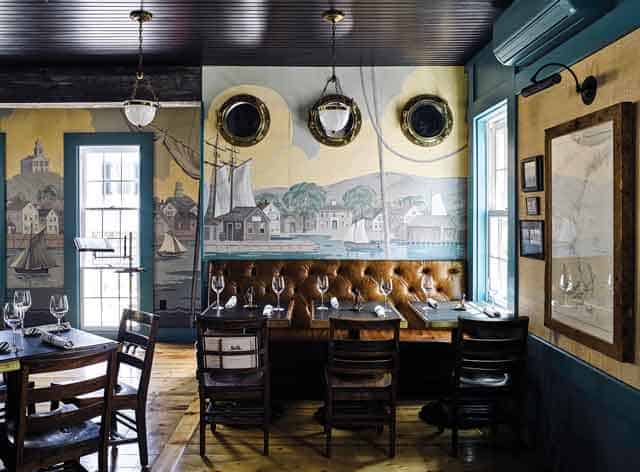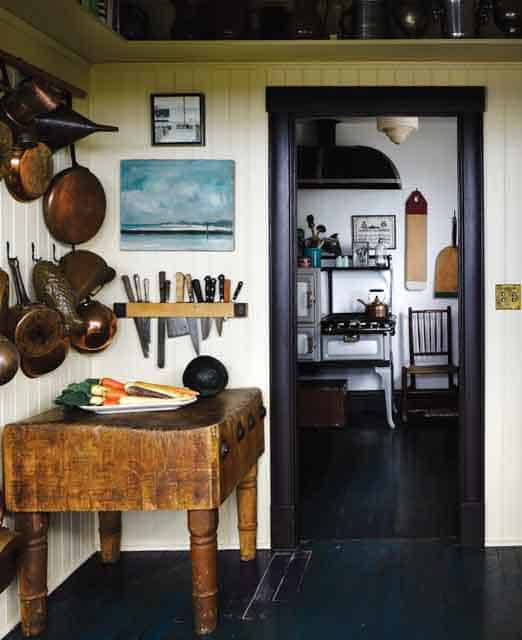by Steve Desroches
Looking at historic photos of Provincetown, the old adage the more things change, the more they stay the same rings true. People, culture, and the names of businesses change, but by and large if the photo of downtown Provincetown comes from 1890 or 1990, certainly with several exceptions, the town looks remarkably the same, or at least recognizable. But as the other saying goes, the devil is in the details. For those who live here or visit often, think about a certain storefront or home that you’ve walked by and ignored over the years, until one day, for better or for worse, a change was made and suddenly you notice that house or business as if it’s the first time. When it’s the botched renovation of a historic home, it’s a heartbreak. When someone with an eye for design and an understanding of Provincetown makes a thoughtful enhancement, it’s a thrill.

This is Provincetown, and people expect a show. They want a true “only in Provincetown” experience. Knock-off big city aesthetics get a yawn. The suburbanization of a building gets scorn. But when someone presents something that captures the spirit of the town with flair and charm, it becomes the talk of the town. That may be why you’re hearing the name Ken Fulk so often. While he’s hardly new to town, his work largely is.
Visiting since the early 1990s, Fulk and his husband Kurt Wootton now spend most of their time in their Provincetown home, the historic house in the East End where the late local legend George Bryant once lived.
For years, Fulk largely kept a low profile in town as he operated his hugely successful design firm in San Francisco, which also has him traveling the world, as he’s just returned from business in Lake Como, Italy. But his work has captured the imagination of the town, as he’s done the design work for hotspots like Strangers and Saints; Liz’s Café, Anybody’s Bar; and the new Courtyard Bar & Raw Bar at the Crown and Anchor. Customers at each restaurant rave about not only the food and drink, but also the décor. He’s making his imprint on a town that has enchanted him.

Not only does Fulk have a magic touch, he has an affinity for Provincetown’s history, and not the kind you can read in books or old newspaper articles, but for the nitty-gritty, brass tacks kind of stories that come from deep community. He’s aware that Provincetown can be a skeptical kind of place, suspicious of wealth and influence. But he shares the sting of seeing a beloved structure demolished and replaced by condos that look like they fell out of a New Jersey suburb. Once something is gone, it’s gone. And the grief that carries is especially harsh in a place as unique and extraordinary as Provincetown. So when he began restoration work on what had been the Bryant house, he met with the family, collected old photos as far back as when it was built in 1905 by Elijah Rodgers and then sold in 1944 to Cora Allen Herring and her husband John, becoming a guest house in 1965, before Bryant moved in in 1977. And a photograph of George hangs in the home that Fulk managed to renovate keeping as much of the original interior as he could, including the original floorboards and wallpaper.

There was a sigh of relief when news broke recently that Fulk purchased the Mary Heaton Vorse house. Vorse was an activist and writer, who was instrumental in the founding of the Provincetown Players and wrote perhaps the most well known book about Provincetown with her 1942 chronicle Time and the Town. Vorse died in 1966 and is buried in the town’s cemetery, and her home, which is not far from where Fulk lives, almost instantly became an important historic landmark to the town. So when it sold, there was concern it could be razed, turned into seasonal condominiums, or be carelessly remodeled. Fulk is committed to a thoughtful restoration, which is already underway with the help of contractor Deborah Paine. His future plans include making the building available to the town’s arts organizations, like the Fine Arts Work Center, Twenty Summers, and the Provincetown Art Association and Museum, keeping the home’s artistic heritage alive.
“We saw it as an opportunity to try and stop the erasure of one of the town’s great assets,” says Fulk. “It’s kind of a holy grail. While we want to save the home, we didn’t want to gentrify it.”
The aforementioned restaurant design projects were all done pro bono, as Fulk used each as a learning opportunity for his staff, which he brought to town with a stern reminder: this is not the Hamptons. He had his creative team learn about Provincetown and study it to have the designs be organic rather than some invasive species of design. They recently did The Shack, the Provincetown Business Guild’s LGBT welcome center, and future projects include the main lounge for the Creative Commons, the new arts space going in at the old Community Center; the barn on the Mary Heaton Vorse property; a redesign of Angel Foods; and perhaps a stunner of a float in the 2019 Carnival Parade.
“It’s not just a love affair with Provincetown, it’s a love affair with the people of this town,” says Fulk. “It’s fun to be able to do something good for the town, a town that’s so good to me.”
For more information on Ken Fulk and his design company visit kenfulk.com.











